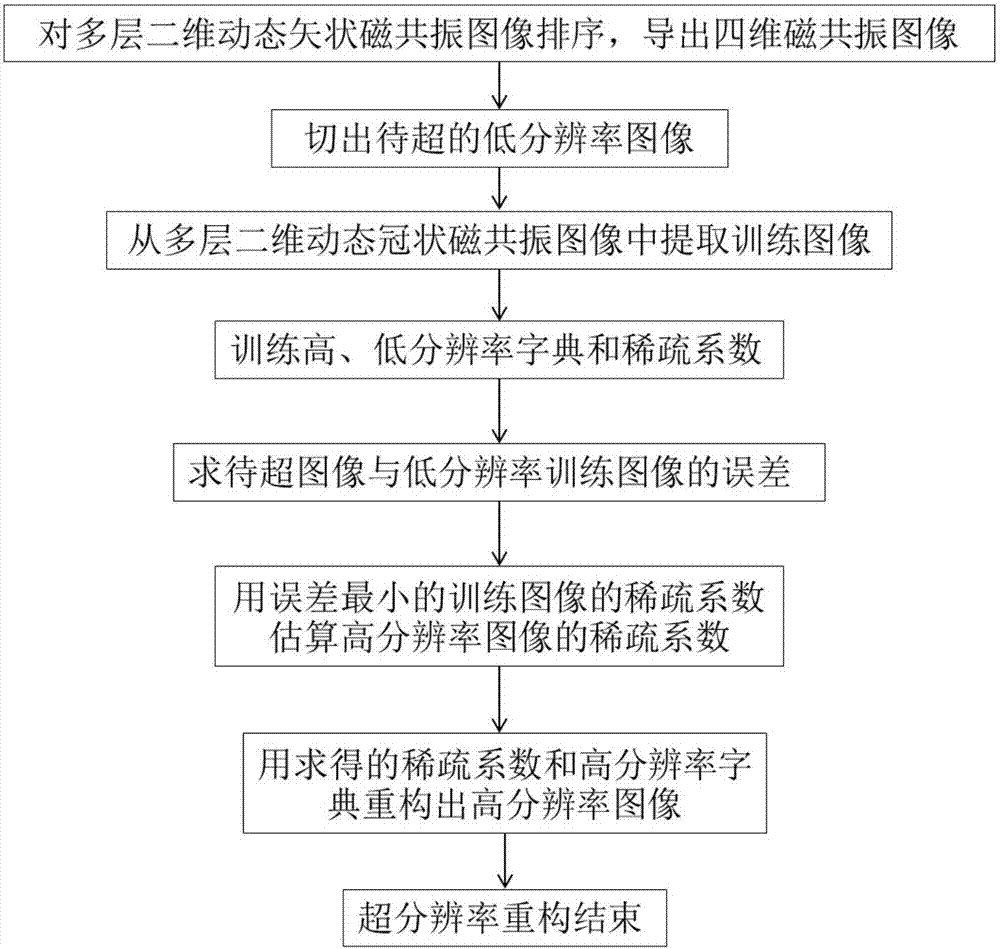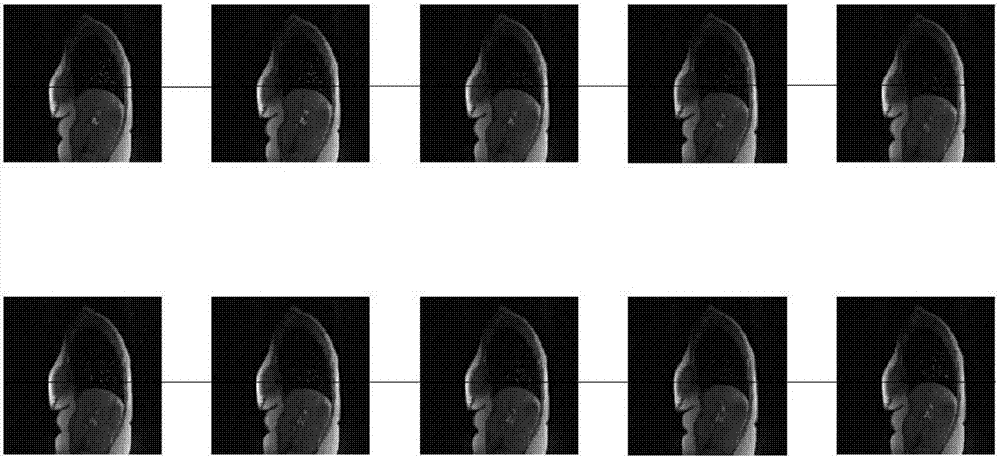A 4d-mri super-resolution reconstruction method based on dual-dictionary learning
A technology of super-resolution reconstruction and 4D-MRI, which is applied in the field of image processing, can solve problems such as obstacles in the image processing process, inability to apply MRI sequence diagrams, and low resolution of 2D-MRI
- Summary
- Abstract
- Description
- Claims
- Application Information
AI Technical Summary
Problems solved by technology
Method used
Image
Examples
Embodiment 1
[0078] Effect of the present invention can be further illustrated by following experiments:
[0079] 1) Experimental conditions
[0080] In this experiment, 16 slices of coronal images and 20 slices of sagittal images are used as experimental data. Each slice has 121 images, and the size of each image is 192×192.
[0081] 2) Experimental content
[0082] The sagittal images of 20 slices are sorted, and each slice extracts 10 images of different respiratory phases to derive 4D-MRI with a size of 192×192×20×10. Then, for the first respiratory phase, we can cut out 192 coronal low-resolution images of 192×20, and then perform super-resolution reconstruction on these 192 coronal low-resolution images:
[0083] First, retrospectively sort the sagittal images of 20 slices, where, figure 2 It is the average respiration change graph of the fifth slice;
[0084] Secondly, perform super-resolution reconstruction on 192 coronal low-resolution images, among which, the super-resolutio...
PUM
 Login to View More
Login to View More Abstract
Description
Claims
Application Information
 Login to View More
Login to View More - R&D
- Intellectual Property
- Life Sciences
- Materials
- Tech Scout
- Unparalleled Data Quality
- Higher Quality Content
- 60% Fewer Hallucinations
Browse by: Latest US Patents, China's latest patents, Technical Efficacy Thesaurus, Application Domain, Technology Topic, Popular Technical Reports.
© 2025 PatSnap. All rights reserved.Legal|Privacy policy|Modern Slavery Act Transparency Statement|Sitemap|About US| Contact US: help@patsnap.com



